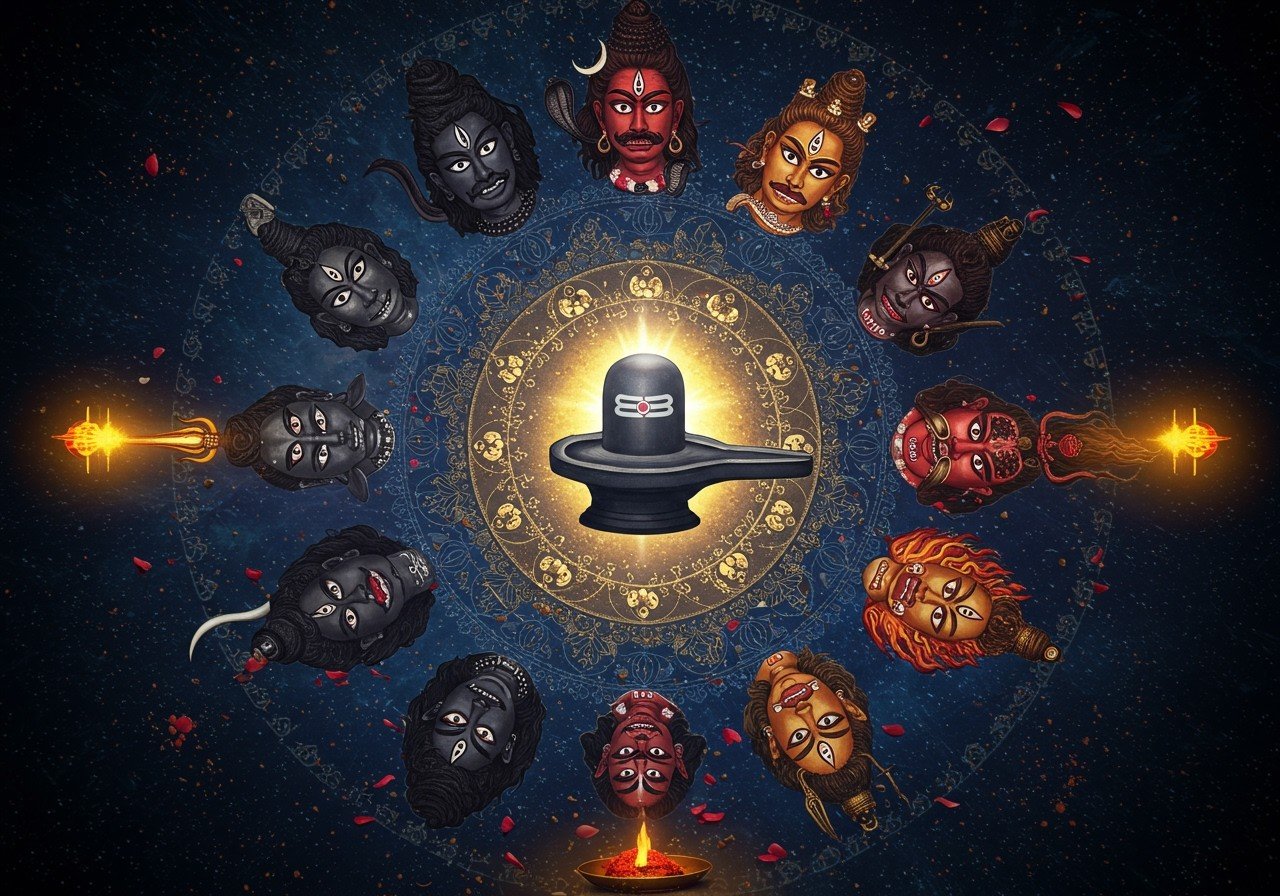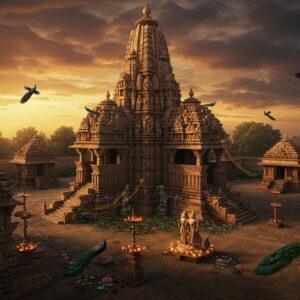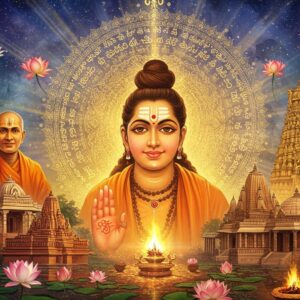
The Eight Forms of Bhairava, known as Ashta Bhairava, hold a special place in the hearts of devotees across India. These divine manifestations of Lord Shiva embody fierce protection and immense spiritual power. Understanding these forms allows us to delve deeper into the rich tapestry of Hindu rituals and cultural heritage. For many Indians who cherish tradition and seek spiritual solace, Bhairava worship is an integral part of life.
Understanding the Essence of Bhairava
Bhairava, a potent manifestation of Lord Shiva, stands as a symbol of both safeguarding and the vanquishing of negativity. He is revered for his fierce countenance, often depicted adorned with skulls and serpents, signifying his power over darkness and ignorance. Traditional rituals and offerings are integral to Bhairava worship, with his image frequently gracing Indian art forms like sculptures and paintings.
Ashta Bhairava: A Glimpse into the Eight Guardians
The Ashta Bhairava represent eight unique facets of Lord Shiva’s cosmic duties. They embody fierce protection, guarding the eight directions and shielding devotees from negative influences. Each direction corresponds to distinct elements and qualities within Hindu cosmology, adding another layer of depth to their significance. The concept of Ashta Bhairava intertwines with Hindu sacred geography, creating a spiritual compass that guides devotees in their worship. Temples across India incorporate the Ashta Bhairava into their rituals, highlighting their integral role in temple practices.
Delving into the Eight Forms
- Asitanga Bhairava (East): Representing the first spark of awakening, Asitanga Bhairava governs the east, symbolizing the vastness of the sky. He illuminates the path out of ignorance, leading seekers toward spiritual enlightenment. He is associated with the element of ether, reflecting the boundless nature of consciousness.
- Ruru Bhairava (Southeast): Ruling over the southeast and associated with the air element, Ruru Bhairava embodies profound wisdom and knowledge. He patiently and silently dismantles darkness (tamas) with unwavering strength, guiding us towards clarity and understanding.
- Chanda Bhairava (South): The fierce lightning of transformation, Chanda Bhairava governs the south and is linked to the fire element. He signifies potent protection and strength, empowering devotees to overcome obstacles and embrace change. His fiery energy ignites the flame of purification and renewal.
- Krodha Bhairava (Southwest): Associated with the southwest and the water element, Krodha Bhairava governs destructive emotions. He embodies righteous anger, channeling it to uphold Dharma and ensure justice prevails. He teaches us to harness our anger for positive transformation and the protection of righteousness.
- Unmatta Bhairava (West): Symbolizing the west and connected to the earth element, Unmatta Bhairava represents the divine madness that transcends duality. He encourages deep introspection and transformation, leading us towards rejuvenation and a deeper connection with our true selves.
- Kapala Bhairava (Northwest): Governing the northwest, Kapala Bhairava is linked to the spirit element. As the seer of death and rebirth, he helps us overcome the fear of mortality, guiding us towards detachment and liberation. He encourages us to embrace the cyclical nature of existence.
- Bhishana Bhairava (North): Representing the north, Bhishana Bhairava embodies divine energy and fearlessness. He unveils the sometimes terrifying truth that lies beyond illusion, empowering us to face reality with courage and clarity. He is a beacon of strength and resilience.
- Samhara Bhairava (Northeast): Governing the northeast, Samhara Bhairava symbolizes the cyclical nature of destruction and regeneration. As the great dissolver, he helps us release attachments to the material world, guiding us toward spiritual liberation. He reminds us of the impermanence of all things.
Rituals and Reverence: Connecting with Bhairava
Each form of Bhairava is associated with unique rituals and offerings. Devotees often visit Bhairava temples, renowned for their distinctive architecture and serene spiritual ambiance. Festivals like Bhairava Ashtami are celebrated with immense devotion and grandeur. Mantras and prayers are essential components of Bhairava worship, enabling a profound connection with his energy. Regional variations in worship practices reflect the rich cultural diversity of India, with each community adding its unique touch.
Cultural and Spiritual Significance: Bhairava’s Enduring Influence
Bhairava worship has a deep-rooted influence on Indian culture and spirituality. His power is invoked in numerous traditional healing practices and spiritual protection rituals. Devotees often share transformative personal experiences, demonstrating Bhairava’s profound impact. In modern times, Bhairava worship continues to resonate with spiritual seekers, fostering community bonds and social cohesion, particularly in rural areas where traditions are deeply cherished.
Exploring the eight forms of Bhairava enriches our understanding of Hindu cultural and spiritual heritage. Learn more about the worship and significance of Bhairava in our detailed blog post. For those seeking to deepen their connection with these powerful deities while enjoying the convenience of modern living, authentic ritual items are now readily available online.
How Poojn.in Can Enhance Your Bhairava Worship
At poojn.in, we understand the importance of having authentic and readily available puja items. To assist you in your devotion to the Ashta Bhairava, we offer a curated selection of items:
- Complete Bhairava Puja Kit: This comprehensive kit contains everything you need for a reverent puja at home, making it easy to honor Bhairava with proper rituals.
- Pure Copper Yantra: These sacred geometrical designs, specific to each Bhairava form, enhance focus and spiritual connection during worship.
- Black Sesame Seeds: A traditional offering to Bhairava, symbolizing purification and devotion.
- Pure Ghee Diya: Illuminate your puja space with the pure and auspicious glow of a ghee diya, enhancing the sanctity of your worship.
- Brass Bells: An essential element in Bhairava rituals, the resonant sound of brass bells invokes a sense of sacredness.
- Black Til Oil: Used in specific Bhairava ceremonies, this oil adds authenticity to your rituals.
Explore our collection of Flammables and other Decorative Items to enhance your spiritual practice. For brass items specifically designed for puja, browse our dedicated Brass Items collection. You can also find a beautiful Radha Krishna Brass Murti and Lakshmi Brass Murti for your home altar.
Visit www.poojn.in or call us at 03369029784 to order these authentic puja items. For personalized assistance, connect with us on WhatsApp: 9476142738. All items are carefully verified for purity and packaged securely for safe delivery across India. At Poojn.in, we are committed to delivering genuine ritual items directly to your doorstep, ensuring the sanctity of your worship practices.
[Note: Product availability may vary. Please check our website for the latest stock and pricing.]
Embracing the Ashta Bhairava in Contemporary Life
The Ashta Bhairava are more than deities; they are guiding lights navigating life’s complexities. Each form imparts unique wisdom and blessings, encouraging balance, strength, and compassion. By exploring these forms, we tap into ancient wisdom that resonates through time, reminding us of the constant divine presence guiding our path.
In today’s demanding world, the teachings of Bhairava offer solace and resilience. They provide protection and direction in spiritual matters and daily life. Incorporating Bhairava worship into our routines allows us to embrace a tradition that nourishes the soul and cultivates inner peace. For those seeking to blend traditional values with modern convenience, authentic ritual items are now easily accessible online, supporting your spiritual practice with authenticity.
Let the Ashta Bhairava be your protectors and mentors, offering wisdom, strength, and safeguarding in all aspects of your life’s journey. Discover more about the Mahabhairav Temple in Tezpur to deepen your understanding of this powerful deity.
FAQs on the Ashta Bhairava
What are the Eight Forms of Bhairava?
The Eight Forms of Bhairava, known as the Ashta Bhairava, are divine manifestations of Lord Shiva, each representing a different facet of life and the universe, offering unique blessings and protection.
What are the names of the Eight Bhairavas in Hindi?
The Eight Bhairavas are known as Asithanga, Ruru, Chanda, Krodha, Unmatta, Kapala, Bhishana, and Samhara Bhairava in Hindi, each name reflecting their distinct qualities and powers.
Why is Bhairava worshipped in eight different forms?
Bhairava is worshipped in eight forms to honor and seek blessings from all aspects of life, with each form embodying specific virtues and offering unique protection against negative influences.
How do the Eight Forms of Bhairava relate to Hindu tradition?
In Hindu tradition, the Ashta Bhairava are revered as powerful protectors, shielding devotees from evil and guiding them through life’s challenges, representing various aspects of Lord Shiva’s power.
What is the significance of Ashta Bhairava in rituals?
Ashta Bhairava plays a crucial role in rituals, as each form is believed to bestow unique blessings and fulfill specific desires of devotees, enhancing the efficacy and spiritual depth of the practices.
Where can one find temples dedicated to the Eight Forms of Bhairava?
Temples dedicated to the Ashta Bhairava are found throughout India, particularly in Tamil Nadu and other parts of South India, serving as sacred spaces for devotees to connect with these powerful deities.
How can one worship the Eight Bhairavas at home?
Devotees can worship the Ashta Bhairava at home by chanting their names, performing aarti, offering flowers, and meditating on their forms, creating a sacred space for connection and seeking blessings within their own homes.
What are the benefits of worshipping the Eight Forms of Bhairava?
Worshipping the Ashta Bhairava is believed to bring protection, courage, and peace, empowering devotees to overcome obstacles, fostering spiritual growth, and alleviating fears.


